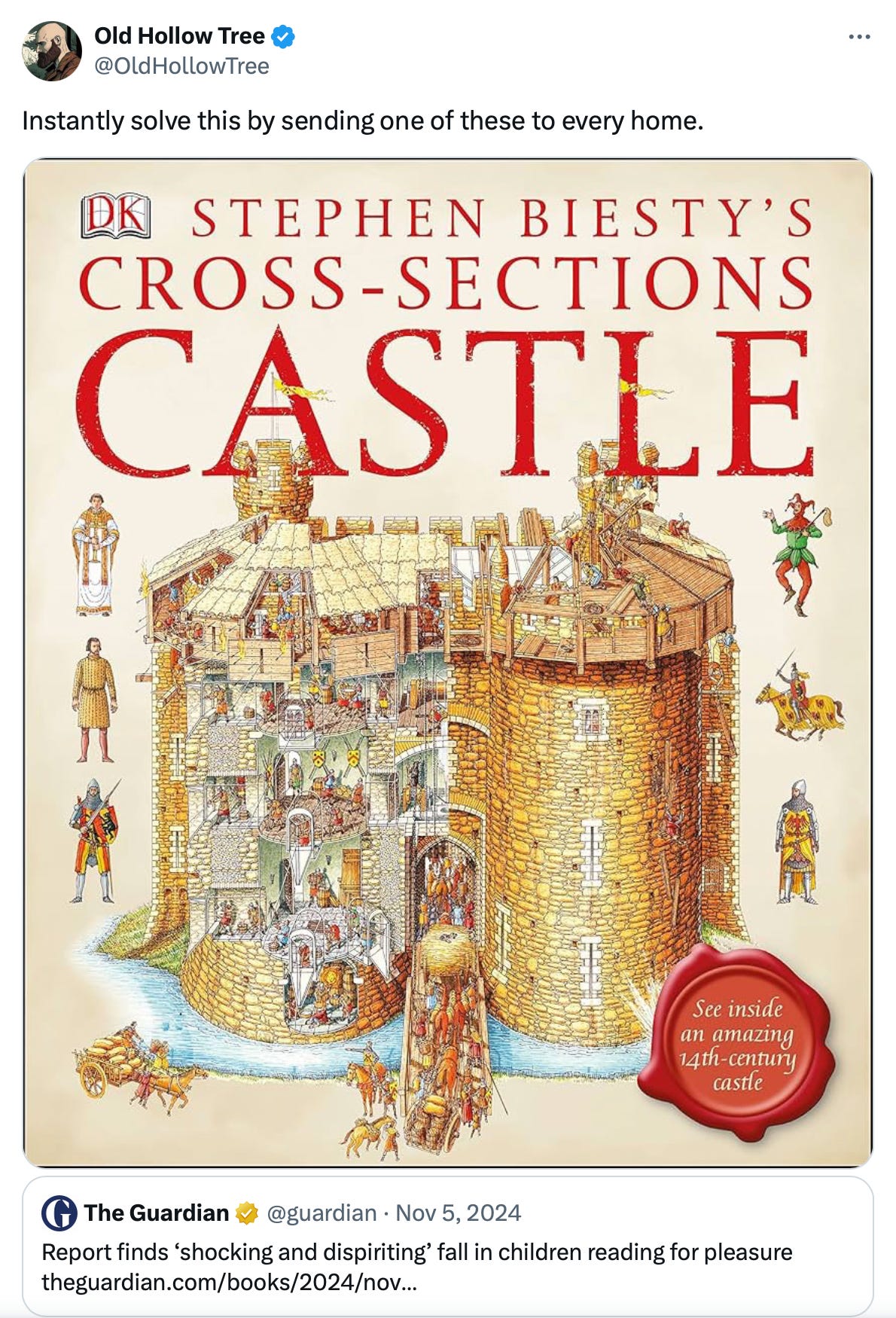Monday Dispatch - 2025/03/17
How to gain 17,000+ subscribers with a single note. Revealing sloppy research. Plus, kids’ book recommendations.
Welcome to Monday Dispatch, a bonus publication with follow ups, recommendations, personal stories, and other updates. Monday Dispatch used to be for premium subscribers only, but it’s currently free for all while I figure out what I’m actually writing about and how to get your support without artificially hiding what I hope are useful ideas.
The secret to gaining 17,000+ subscribers without publishing a single post
On March 2nd 2025, Will Parker Anderson posted his first note on Substack. He had exactly two Substack subscribers. Two weeks later, Will’s subscribers were more than 17,000.
How is this possible?! What’s his secret?
The secret is that there is no secret!
The note was nothing special: “Hey friends, I’m a senior editor at Penguin Random House. New to substack, but I’ll be posting tips about writing and publishing here weekly. Excited to connect with you all.”
Will’s massive growth came down to being the right person, in the right place, at the right time. Simple, not easy.
The right person: Senior editor at big publishing company giving writing advice.
In the right place: Substack is a platform for writers. Maybe not every subscriber has a newsletter or aspires to publish, but it’s safe to assume a large enough portion are interested enough to subscribe.
At the right time: On March 12, Substack announced having crossed 5 million paid subscriptions, just four months after having reached 4 million.
Sure, there might have been a lot of luck in there, too. For whatever reason, his note might have tickled the Substack algorithm in just the right way to reach escape velocity and go viral.
But that only explains the “right time” factor.
There’s an apocryphal story about an elderly Picasso being approached in a restaurant by a diner who asked for a sketch on a napkin. The master took the napkin and in just a few strokes produced a portrait in his unmistakable style. “That will be 50,000 francs, madame.” “How is it possible,” exclaimed the woman, “it took you no more than thirty seconds!” “No,” replied Picasso as he folded the napkin and put it into his pocket, “it has taken me forty years to do that.”
Becoming a senior editor at one of the world’s top publishing houses takes years of effort. And if you check Will’s LinkedIn, you’ll indeed see that he’s been in the business since 2013.
So, well done
. I am one of the many subscribers and am looking forward to your advice.Podcasts – Anxious generation… or biased author and sloppy researchers?
The Anxious Generation by Jonathan Haidt made quite the splash last year. Haidt argues smartphones and social media are to blame for the what he refers to as an epidemic of mental illness.
Vaden Masrani and Ben Chugg take a look at the book and in particular at the research Haidt used to back up his claims in episode 82 of their Increment podcast.
Their conclusion? The data was treated “sloppily.”
Haidt is aware of his bias and went to great lengths to offset it by collecting and processing the studies in the open and online. Yet, they argue, not only does he mix and match results from different studies to support his conclusion, but he also draws from studies that are far from rigorous.
I admit that I haven’t verified their claims, but having been a listener of the show for a while, I have no reason to be suspicious. Besides—and here, my own bias comes into play—between the replication crisis and academics like Francesca Gino, how can we trust anything coming from fields of research that resort to appending “science” to their name?
That’s not to dismiss Haidt’s claim—Vaden and Ben take it seriously and so do I. But we need to be careful in choosing explanations that boil down to “this new technology is bad.”
Many of the technologies we depend on and treat as harmless today were considered evil and dangerous when they were introduced. Check out the excellent Pessimist Archive to get an idea.
My guess is that reality is far more complex than the correlation some see, or forcefully extract, from a bunch of more or less rigorous studies. Every child is unique and parents need to work together to create individual solutions.
Kids Books
I stumbled upon a post on X by
, recommending giving every child a copy of Stephen Biesty’s Cross-Sections Castle to encourage reading:Another case of “right place, right time.” My son has been interested in castles recently, building his own LEGO version after the latest session of watching Lord of the Rings together.
For what my sample of one is worth, Ryan’s suggestion is solid. My son immediately buried his head in Biesty’s superb illustrations and got lost in the book for a long while.
We’ll likely get the rest of the Cross-Sections series. I’ll let you know which was the favorite.



